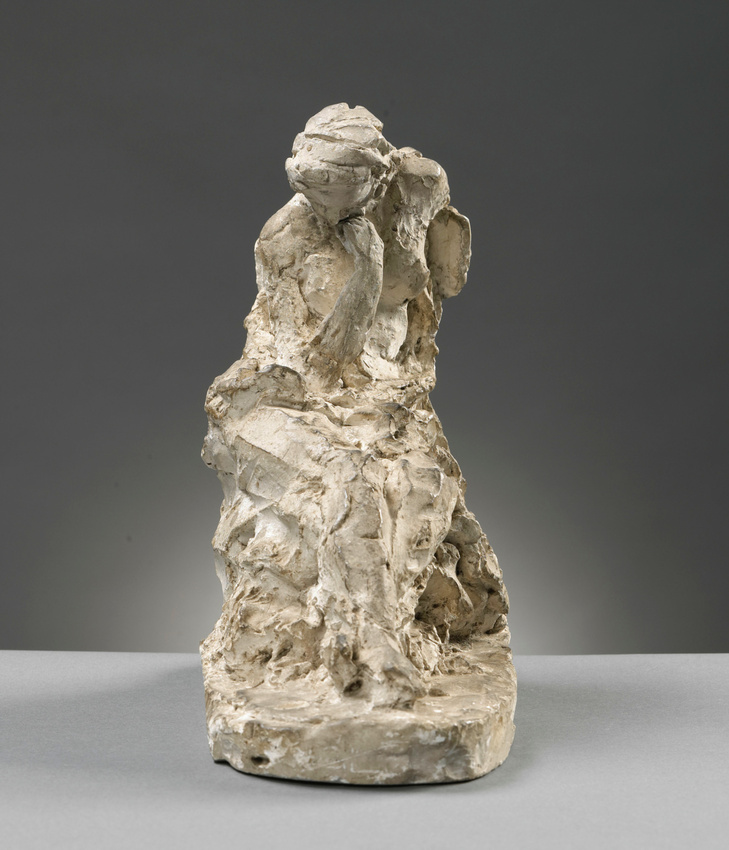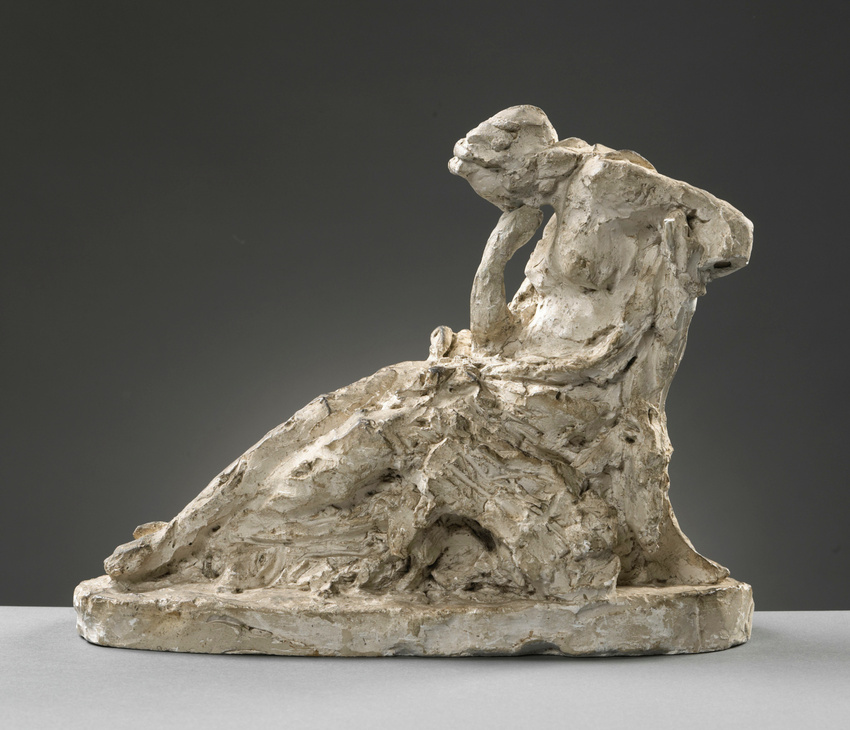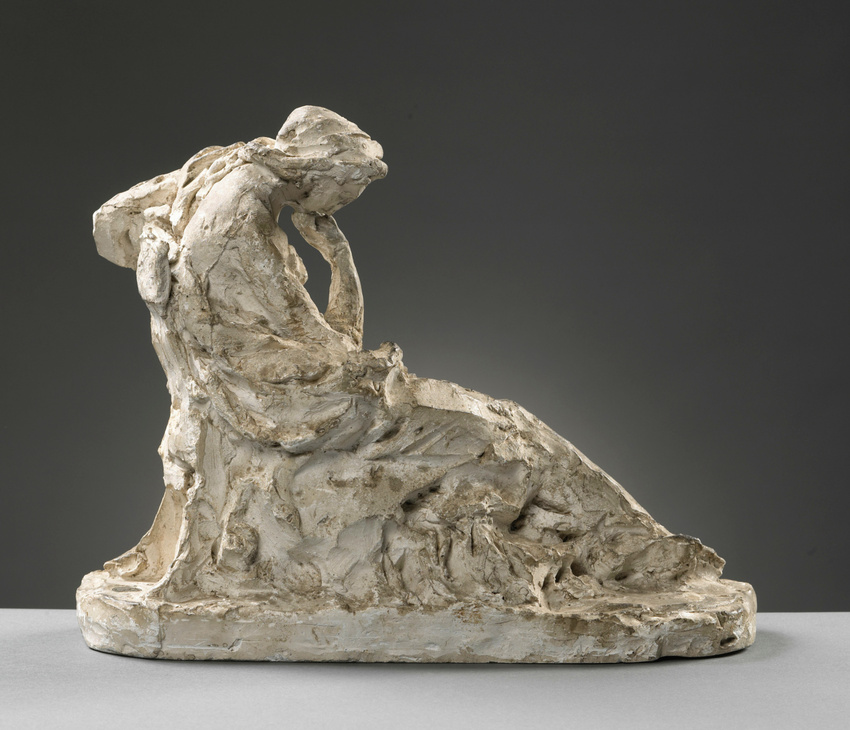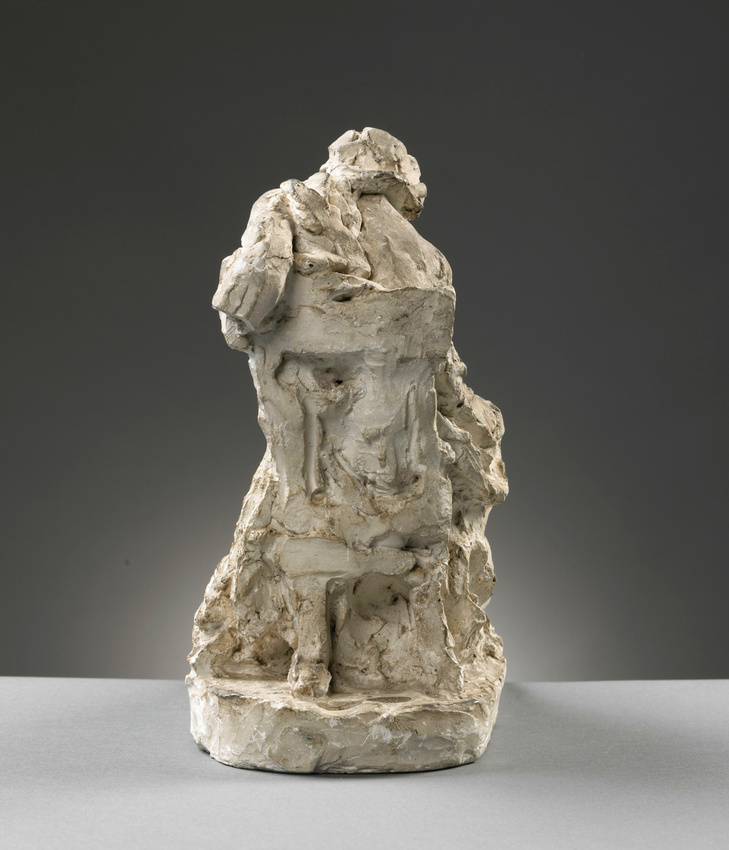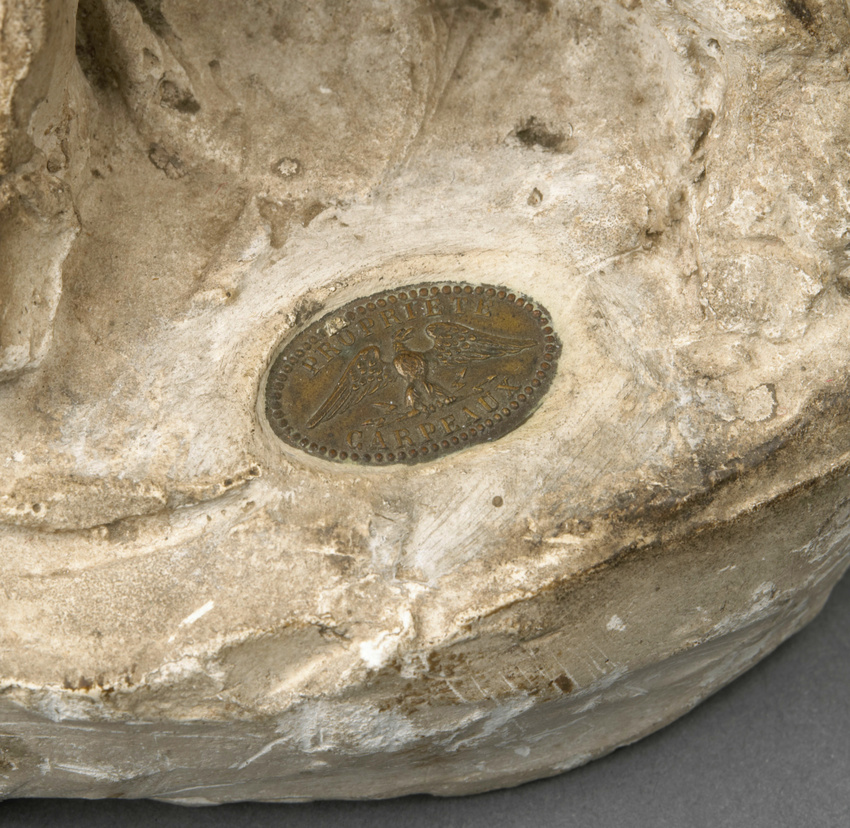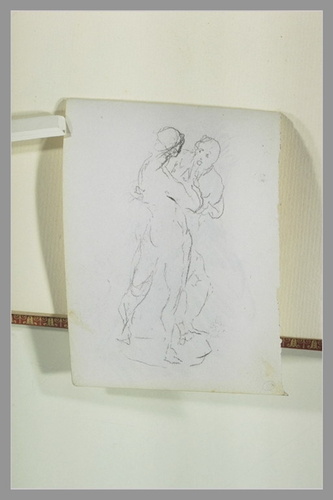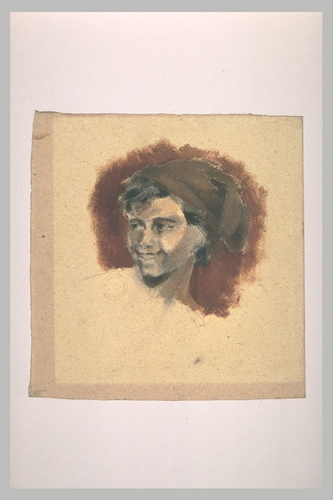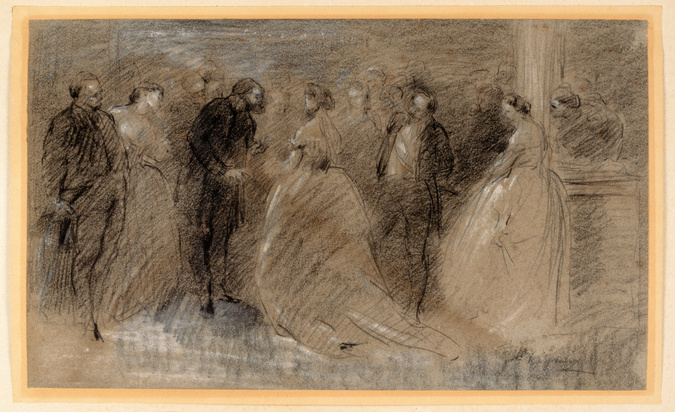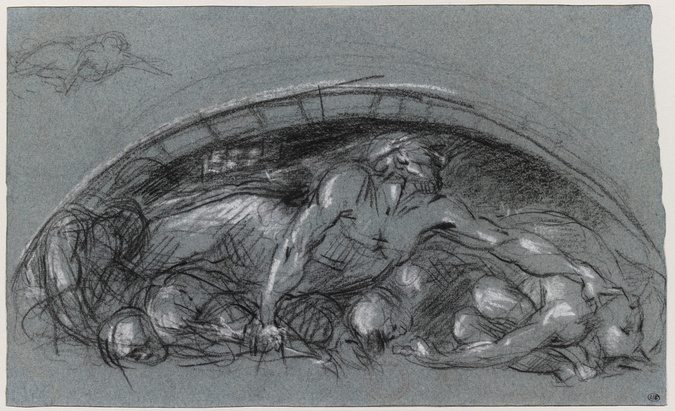Sapho
Although Carpeaux' liveliness is found in his letters and drawings, it is most vividly expressed in his plaster models. Pensive figures, such as this plaster which featured in the second sale of Carpeaux's studio in December 1913, are rare. We might quote the Thoughtful Warrior (Paris, Petit Palais), or Napoleon I Seated or the bust of Palombella (copies in the Musée d'Orsay). The sketch of Sappho, for which there is no known final version, belongs to this register, as its other title Woman Thinking confirms.
Sculptures on literary themes were characteristic of the nineteenth century, which explains why the poetess Sappho is a recurring theme in the collections of the Musee d'Orsay. In the nave, there is first a marble Sapho by James Pradier (1852), then a plaster model of the poetess with a clay patina by Eugène Guillaume (1876) and finally Jules Desbois' terracotta figurine (1907). These works were part of the craze for the neo-Greek style that fascinated the Second Empire.
